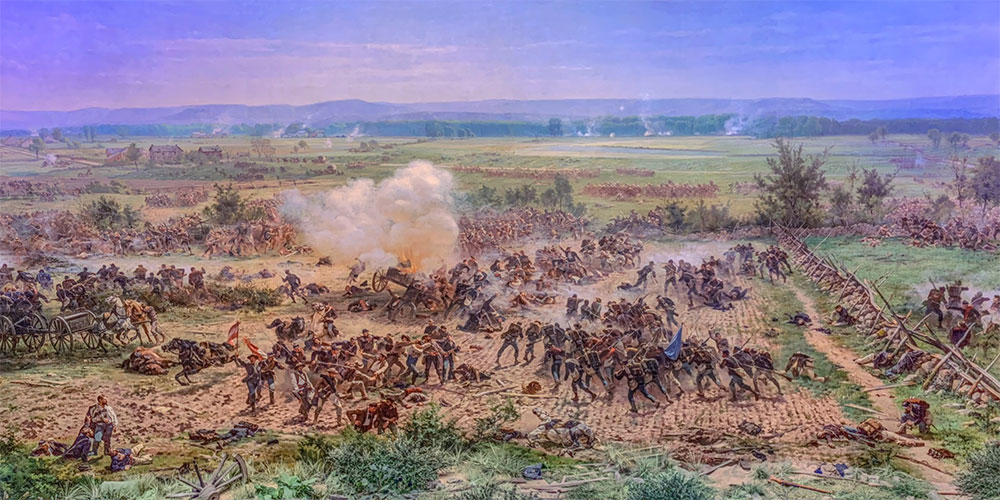Before there was virtual reality, before there were motion pictures, before there was any sort of modern media interactivity, there was the Battle of Gettysburg Cyclorama. This massive painting, commemorating the bloody final Confederate assault of July 3, 1863, was first exhibited 20 years after this pivotal battle of the American Civil War.
Following a $13 million restoration completed in 2008, the 42-foot high painting by French artist Paul Philippoteaux—with its perimeter an immense 377 feet—was installed in a purpose-built structure at the Gettysburg National Military Park Museum and Visitor Center, which describes the work as “longer than a football field and higher than a four-story building.”
On this website we’ve created a virtual-reality version of the Cyclorama to take Philippoteaux’s 19th-century painting into the era of modern immersive media.


